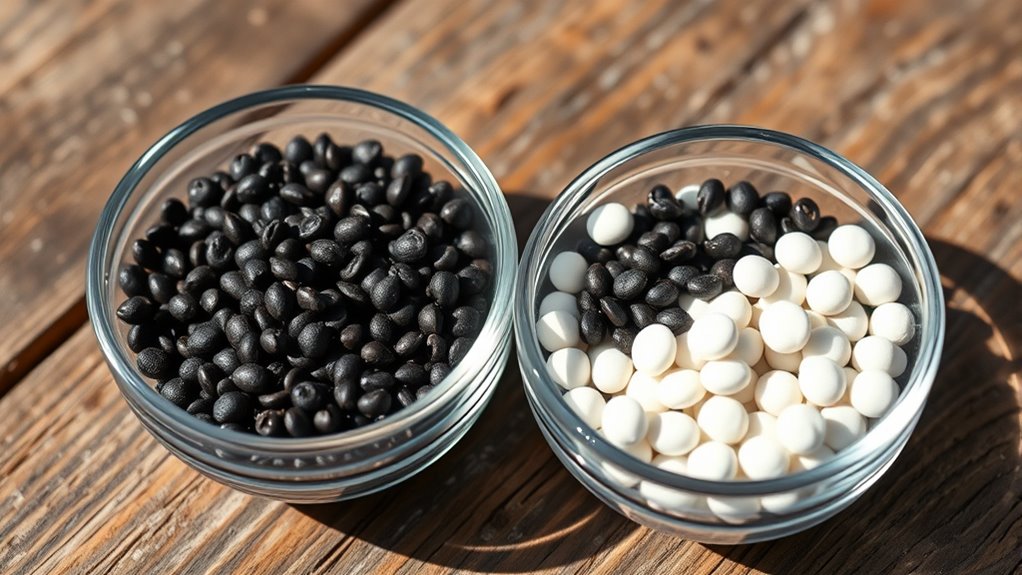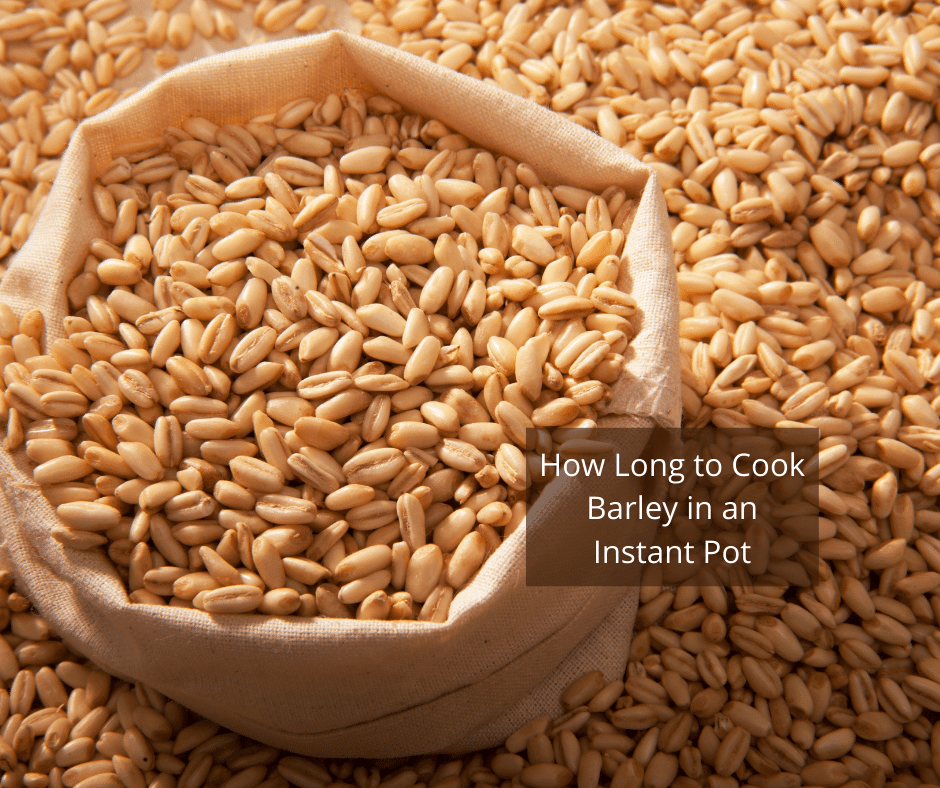When choosing between black and white chia seeds, consider the look you want for your dish. Black seeds add bold color and vibrant contrast, perfect for visually striking recipes, while white seeds blend seamlessly for a neutral appearance. Nutritionally, both are similar, so your decision mainly depends on aesthetics and recipe presentation. If you keep exploring, you’ll discover more tips to help you pick the best option for your culinary needs and style.
Key Takeaways
- Choose black chia seeds for a vibrant, bold appearance in dishes, especially lighter-colored foods.
- Opt for white chia seeds when a neutral, less noticeable look is desired in recipes.
- Both varieties are nutritionally similar, offering fiber, omega-3s, and antioxidants; selection mainly affects presentation.
- Use black seeds to add visual contrast and white seeds for seamless blending into smoothies or baked goods.
- Personal preference and aesthetic goals should guide your choice, as both seeds are versatile and healthful.

When choosing between black and white chia seeds, understanding their subtle differences can help you make the best choice for your needs. While they look different, these seeds are remarkably similar in many respects, especially when it comes to their nutritional differences and culinary uses. Both varieties are packed with fiber, omega-3 fatty acids, protein, and essential minerals like calcium and magnesium. However, some slight variations may influence your decision depending on your dietary goals or taste preferences. For example, some studies suggest that black chia seeds contain marginally higher levels of anthocyanins, which are powerful antioxidants responsible for their darker hue. These antioxidants can contribute to overall health, but the difference isn’t dramatic enough to make one superior to the other in nutritional value. Instead, both types serve as excellent sources of plant-based nutrition, making them versatile additions to your diet. Additionally, the antioxidant content may vary slightly, which could be a consideration for those seeking maximum health benefits.
In terms of culinary uses, the choice between black and white chia seeds often comes down to visual appeal and texture. When adding chia seeds to smoothies, oatmeal, or baked goods, you might prefer the white variety for its neutral color, which blends seamlessly without altering the appearance of your dish. Conversely, black chia seeds can add a striking contrast, especially in lighter foods like yogurt or puddings, making your meal visually appealing. Both seeds absorb liquids and create a gel-like consistency, so they can be used interchangeably in most recipes. You can sprinkle them on salads, mix them into beverages, or incorporate them into baking without worrying about flavor differences, as their taste is quite mild and nutty.
Another aspect to consider is the aesthetic effect. If you’re preparing a dish where presentation matters, choosing between black and white chia seeds can enhance the visual impact. White seeds tend to be less noticeable, allowing the colors of other ingredients to stand out, while black seeds provide a bold, eye-catching appearance that can make your dish look more vibrant. Nutritionally, there’s little difference, so your decision should primarily hinge on how the seeds look and how they fit into your culinary presentation.
Ultimately, whether you pick black or white chia seeds, you’re getting a nutrient-dense, versatile ingredient that boosts your health and enhances your recipes. While minor differences exist in their antioxidants and appearance, these shouldn’t overshadow their shared benefits. Your choice comes down to personal preference, aesthetic considerations, and how you plan to incorporate them into your meals. Both options support a healthy lifestyle, so enjoy experimenting with each to discover which fits your taste and style best.
Frequently Asked Questions
Are There Any Health Benefits Unique to Black or White Chia Seeds?
Black and white chia seeds offer similar health benefits, but there are slight differences in nutritional variations and antioxidant content. Black seeds tend to have slightly higher antioxidant levels, which can help combat free radicals. White seeds are often milder in taste. Overall, both types provide fiber, omega-3s, and protein, so your choice mainly depends on personal preference. Incorporate either into your diet for a nutritious boost.
Do Black and White Chia Seeds Taste Different?
Black and white chia seeds taste nearly identical, so you’ll hardly notice a difference in flavor—it’s like trying to find a whisper in a thunderstorm. The taste variation is subtle, with both having a mild, nutty flavor. However, you’ll spot visual differences easily: black seeds are dark and striking, while white seeds are light and subtle. Both work perfectly in smoothies or puddings, so choose based on visual appeal or personal preference!
Which Chia Seed Color Is More Sustainable to Produce?
You’ll find that white chia seeds are generally more sustainable to produce because they often involve fewer resource-intensive farming practices. Their seed production impact tends to be lower, thanks to more efficient harvesting and processing methods. While black chia seeds are equally nutritious, choosing white seeds can support more sustainable farming practices, making them a better option if you’re aiming to reduce environmental impact without sacrificing quality.
Can You Mix Black and White Chia Seeds in Recipes?
Imagine a painter blending two vibrant colors on a palette; you can do the same with black and white chia seeds. Yes, you can mix them in recipes to create a unique visual and flavor. This color blending enhances recipe versatility, allowing you to customize textures and appearances. So go ahead, experiment with combining black and white chia seeds for a creative and nutritious twist in your dishes.
Are There Any Cultural Differences in Chia Seed Preferences?
You’ll find that cultural symbolism and traditional uses influence chia seed preferences worldwide. In some cultures, black chia seeds symbolize strength and liveliness, often used in rituals and traditional dishes. Others prefer white chia seeds for their subtle appearance, blending seamlessly into recipes without altering color or taste. These preferences reflect cultural values and history, shaping how different communities incorporate chia seeds into their diets and rituals.
Conclusion
Ultimately, choosing between black and white chia seeds is like picking a star from the night sky—you can’t go wrong. Each offers its own unique sparkle, adding health and color to your life’s canvas. Think of them as tiny treasures, waiting to uncover your wellness journey. So, trust your gut, and let these seeds be your guiding light toward a brighter, healthier tomorrow. After all, it’s your choice that turns the ordinary into something extraordinary.








